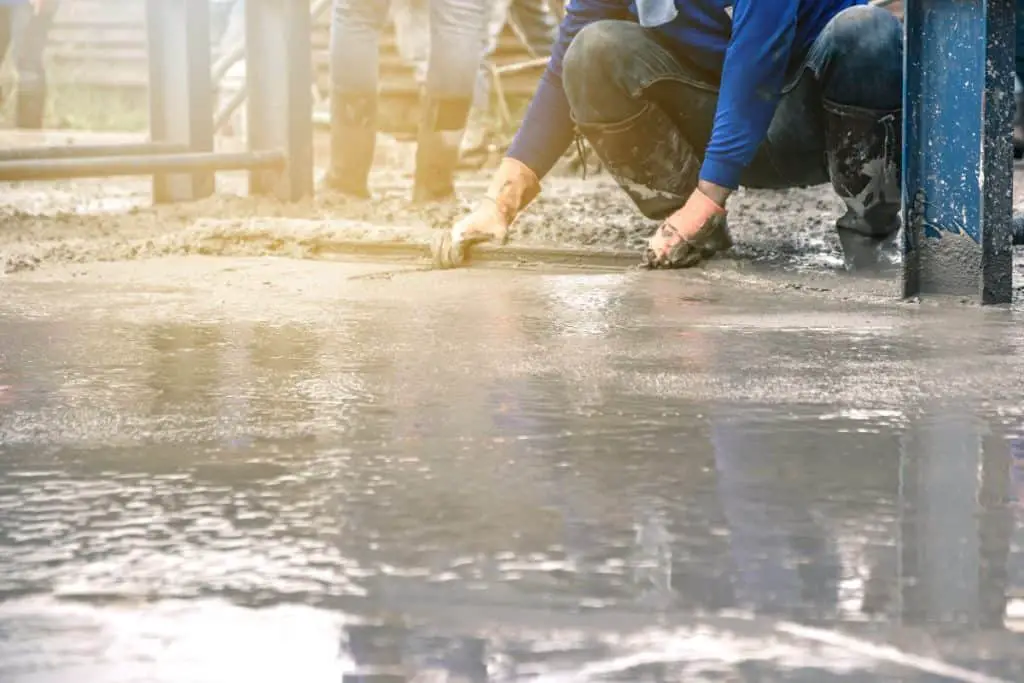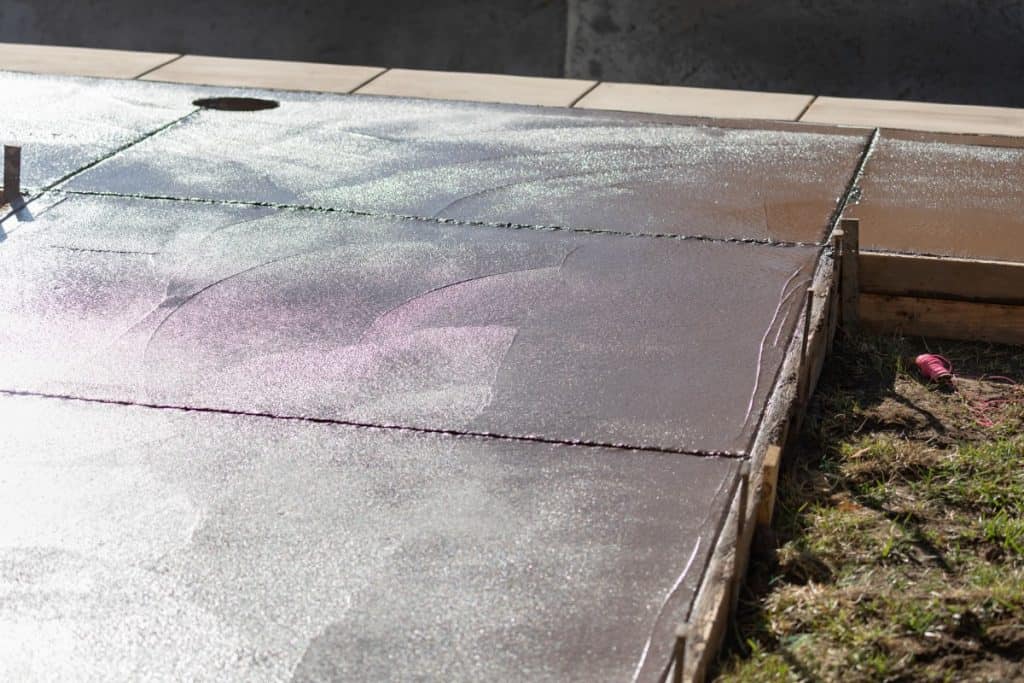A lot of people don’t know just how important water is to concrete, even after it’s been added to the cement and aggregate mixture. The question might arise whether more water is really necessary during the curing process.
During the curing process, the concrete should be kept wet. This is a process called “hydration” and is where the water reacts chemically to the compounds in the cement mixture. Keeping the concrete wet causes multiple chemical reactions in the interior of the concrete, making it as strong as it can be.

Did you know that concrete never fully dries out after you add the water? Water is so integral to concrete, that it doesn’t let the water molecules go even after the concrete feels like it’s dry. There are several good reasons why you should keep concrete wet during the curing process and many methods you could use to do it.
Table of Contents
Chemical Reaction To Water
Portland Cement is one of the most common types of cement used around the world. This cement mixed with water and aggregates (such as sand and gravel), creates concrete. Water is the key ingredient in concrete. Without it, concrete could never develop the strength needed to form structures like sidewalks or foundations.

There are 5 main compounds in Portland Cement that make up at least 90% of the overall mixture:
- Tricalcium silicate (C3S)
- Dicalcium silicate (C2S)
- Tricalcium aluminate (C3A)
- Tetracalcium aluminoferrite (C4AF)
- Gypsum (CSH2)
When water is added into this mix of compounds, many chemical reactions take place:
- Tricalcium silicate produces and water produces lime and heat. This contributes a lot to the initial strength of the concrete.
- Tricalcium aluminate reacts with the gypsum to create ettringite crystals and heat.
- Once all the gypsum has been used up, it reacts with water and any remaining Tricalcium aluminate to create monosulfate aluminate hydrate.
- The dicalcium silicate reacts with water to form calcium silicate hydrates and heat. This contributes to the long-term strength of the concrete.
- Tetracalcium aluminoferrite reacts with water and gypsum to form more ettringite, lime, and alumina hydroxides. Source
The resulting paste mixed in with the aggregates hardens through its reaction to water creating concrete that we walk on or that hold up enormously tall skyscrapers. It all depends on what proportions of compounds are used in the cement mixture.
Keep Concrete Wet For Maximum Strength

Once the cement has been poured, the forms have been taken away, the concrete needs to cure. During the curing process, it would be a mistake to let the concrete simply dry. Drying is not how concrete gets its strength.
The curing process in the concrete will continue for as long as there is water or moisture in the concrete. However, there is a balance you need to strike while you are water-curing (also called moisture-curing). Concrete will continue to gain strength as long as there is water in it, but if it water-cures for too long, the rate of its strength-gain will slow down.
It’s always best to consult the instructions for each concrete mixture so that you know how long it will take to get to that specific mixture’s design strength.
Methods For Water-Curing Concrete
Firstly, make sure that the water on the surface of the concrete evaporates before you begin water-curing. Once the water on top evaporates, it means that the concrete has become somewhat durable. This should take about an hour, depending on the temperature outside, but you shouldn’t ignore the concrete during this crucial step.
Ponding, Fogging, and Wet Covering
The ponding method of water-curing concrete is only for horizontal and flat surfaces like slabs. In ponding, you’re building an area on top of the concrete so you can flood the water in and create a pond. You can do this by creating walls or berms along the edges of the concrete to hold the water in. Possible materials could be sand, clay, or mortar.
This process requires a lot of water. You need to refill the pond at least 2 to 3 times per day since the water will evaporate, especially in the hot summer months. All edges of the concrete must be covered with water. If even one spot is missed, it could make that spot weak and possibly crack.
For fogging (or “misting”), this method is exactly as it seems. It is simply spraying fine mist or fog over the surface of the concrete to maintain moisture. This method, like all curing methods, will help prevent shrinkage cracking of the concrete. This method should not leave standing water on the surface or it could make the concrete weaker and more porous.
You can place a wet covering over the concrete after it has hardened enough so that the covering won’t damage the cement. Use materials such as burlap, straw, or canvas coverings. You can also use plastic sheeting, but be very careful. A plastic sheet can develop wrinkles, air pockets, or pooling water on top of the concrete, creating areas of blotching and uneven curing of your concrete.

For all of these methods, temperatures must be above 50º Fahrenheit for at least a week during the curing process. If it’s below that, the chemical processes will slow down. At 45º, they will stop altogether and the concrete won’t gain any more strength.
How Long Should It Take to Water-Cure Concrete?
A concrete mixture that isn’t water-cured at all will dry out very quickly and have no strength. This is why it’s so important to water-cure concrete for at least 20 days. 28 days (or a month) is the recommended time most professionals and concrete manufacturing companies recommend you cure your concrete.
Here is a general outline of the curing process:
Remember to consult the documentation for your individual concrete mix first for specific curing instructions.
- During the first 24 hours after setting, you should begin the curing process and maintain it.
- After about 48 hours, the forms can be removed and you may walk on the surface of the concrete.
- 4 days is considered the minimum needed to properly cure most concrete.
- At 7 days, this is considered only “partial curing.” Heavy traffic like that of large equipment is okay.
- At 28 days, the concrete should have reached its designed strength and is now considered completely cured.
In short, water-curing concrete is essential to the concrete’s strength and lifespan. It’s not a step you can afford to skip.




1 thought on “Do You Need to Keep Concrete Wet During the Curing Process?”
Comments are closed.